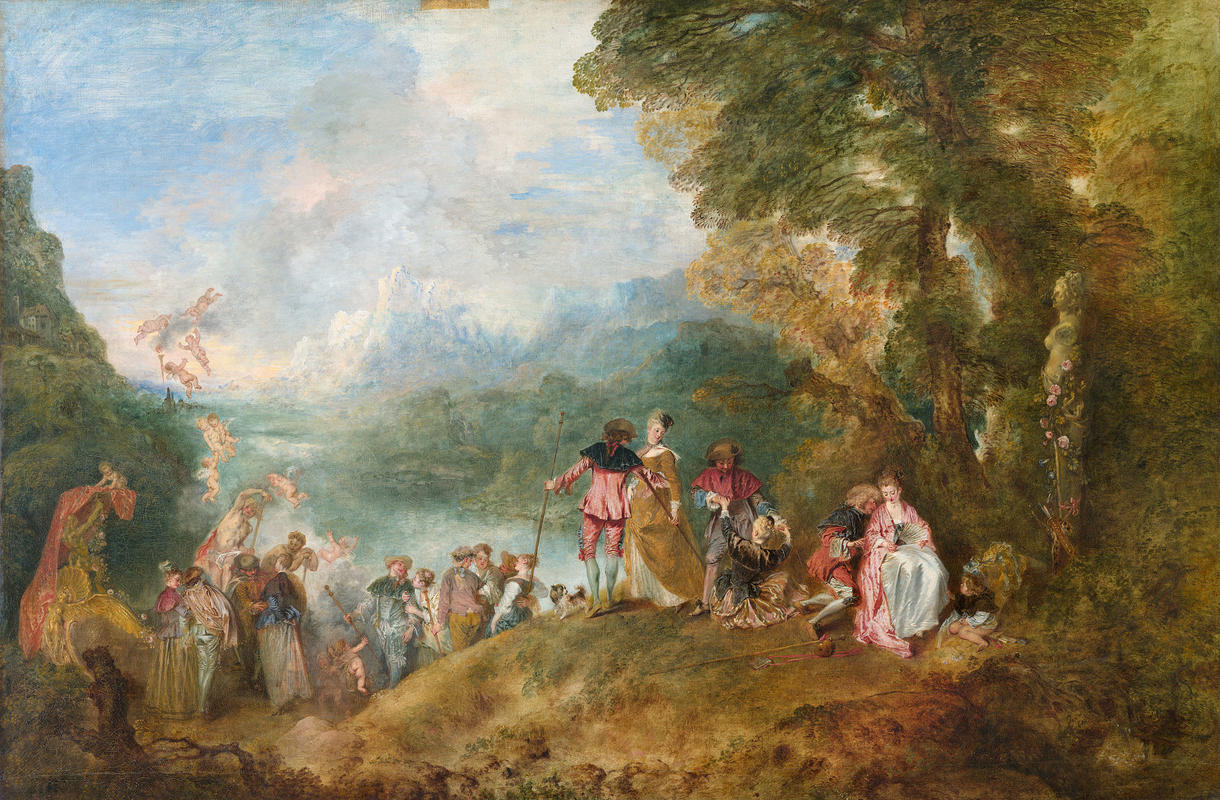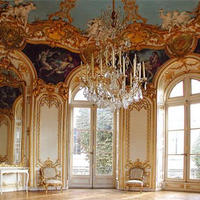More about The Embarkation for Cythera
- All
- Info
- Shop

Contributor
Jean-Antoine Watteau’s Embarkation for Cythera is the perfect example of a fete galante, which is a french phrase that roughly translates to a painting of fashionistas chilling outdoors.
This genre of painting was pretty much invented by Watteau during the Rococo art movement, a distinctly French response to the extra AF Baroque period. This painting took five years for Watteau to finish, and was the reception piece for his acceptance to the Academy.
This looks like a real fun party they’re going to or are recovering from, and this painting represents how lighthearted and overwhelmingly pink and fluffy Rococo art was. According to Greek mythology, Cythera was the birthplace of Aphrodite, the super fine goddess of love. Watteau first arrived in Paris to work as a set decorator and builder in the theatre, and it’s possible this painting was inspired by contemporary operas about the city and about that most precarious past time -- love. In fact, it’s possible that Watteau had seen the play “Les Trois Cousines” in which most of a French village, tired of cooking too much food for one, travel to Cythera looking for a hook-up. The painting itself contains its own mini-narrative about love. While at first glance it may look like just a crowd of people loading onto a ship with a bunch of cherubs flitting above, the painting is actually depicting several couples, who actually all look a lot alike.
The clue to this painting? Follow the thicc baby butts. The cherub flying above the ship balances out the half naked baby butt on the bottom right of the painting. The painting’s balanced composition is reflected by the mini-story right next to the statue. We see three couples in various stages of courtship. From right to left, there is the lady playing hard to get, the couple joined by hands, starting their life together, and then the couple moving forward together, with the woman looking longingly back to the fun days when they were younger.
All of the couples look so similar they could belong to the same high school clique. The men are wearing the same hats, and the woman look basically identical. Therefore we know these aren’t really several couples going on a boat ride, but more a representation of ~looove’s eternal FlAmEEe~. Watteau’s Embarkation to Cythera shows us that whether we’re having our first kiss, or feel like we’ve been with our partners way too long, we can all take a sexy boat ride to the island of love to rekindle romance.
Sources
- Baetjer, Katharine, and Cowart, Georgia. Watteau, Music, and Theater. New York: Metropolitan Museum of Art, 2009.
- Charles, Victoria, and Carl, Klaus. Rococo. New York: Parkstone International, 2012. Accessed February 20, 2019. ProQuest Ebook Central.
- Roland, Michel. Watteau, an Artist of the Eighteenth Century. New York: Alpine Fine Arts, 1984.
- "Work: Pilgrimage to Cythera." Louvre Museum. Accessed February 28, 2019. https://www.louvre.fr/en/oeuvre-notices/pilgrimage-cythera.
Featured Content
Here is what Wikipedia says about The Embarkation for Cythera

The Embarkation for Cythera ("L'embarquement pour Cythère") is a painting by the French painter Jean-Antoine Watteau.
It is also known as Voyage to Cythera and Pilgrimage to the Isle of Cythera. Watteau submitted this work to the Royal Academy of Painting and Sculpture as his reception piece in 1717. The painting is now in the Louvre, Paris. A second version of the work, sometimes called Pilgrimage to Cythera to distinguish it, was painted by Watteau about 1718 or 1719 and is in the Charlottenburg Palace, Berlin. These elaborated a much simpler depiction painted by Watteau in 1709 or 1710, which is now in Frankfurt.
Check out the full Wikipedia article about The Embarkation for Cythera














